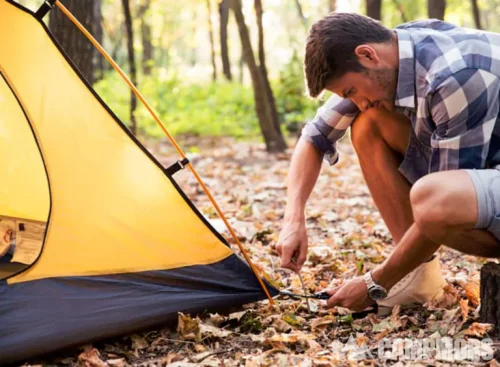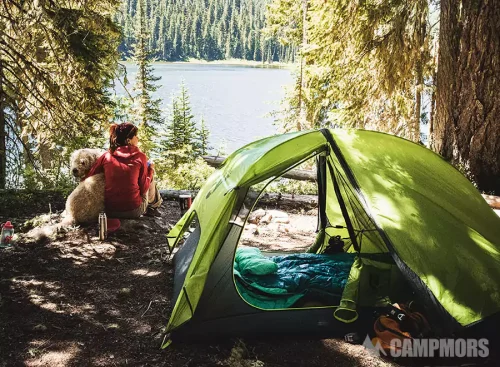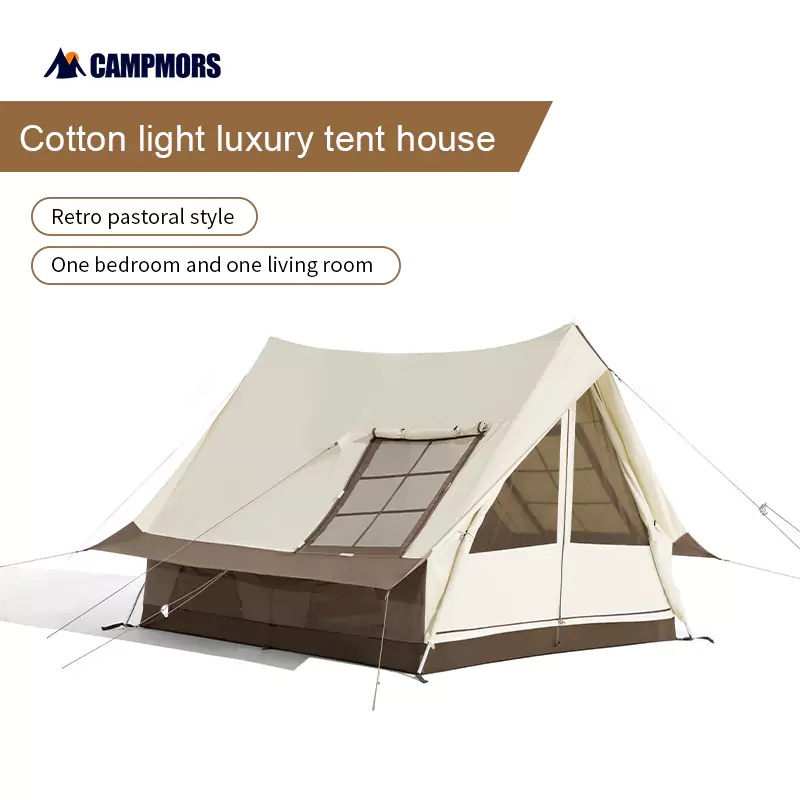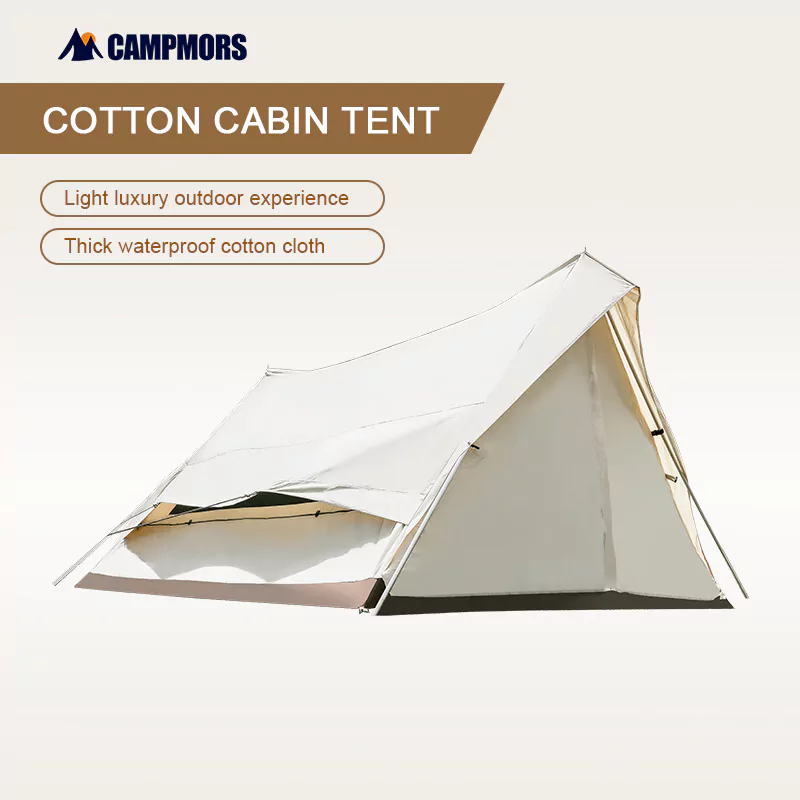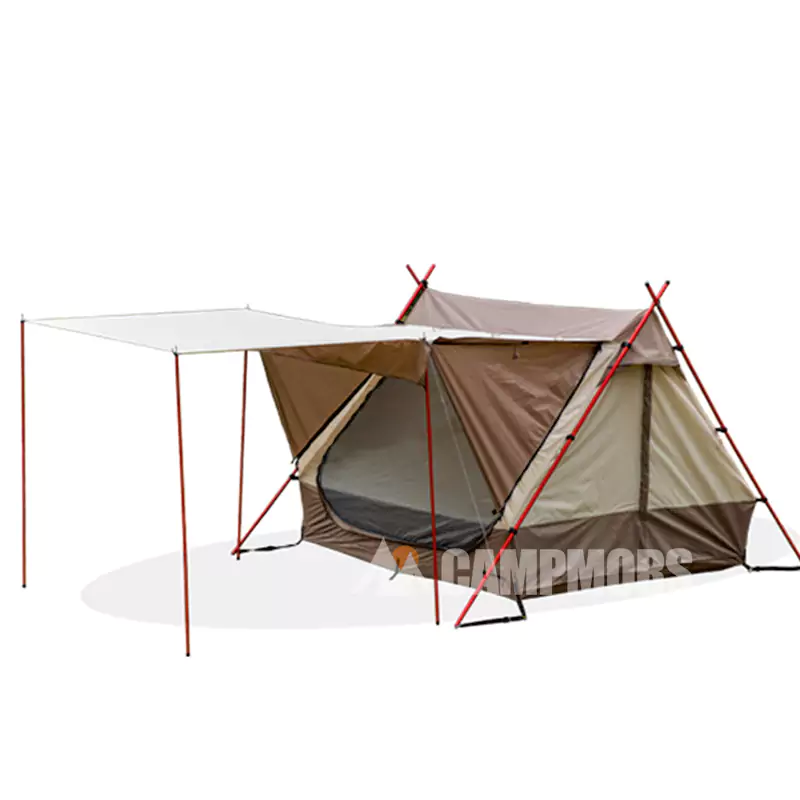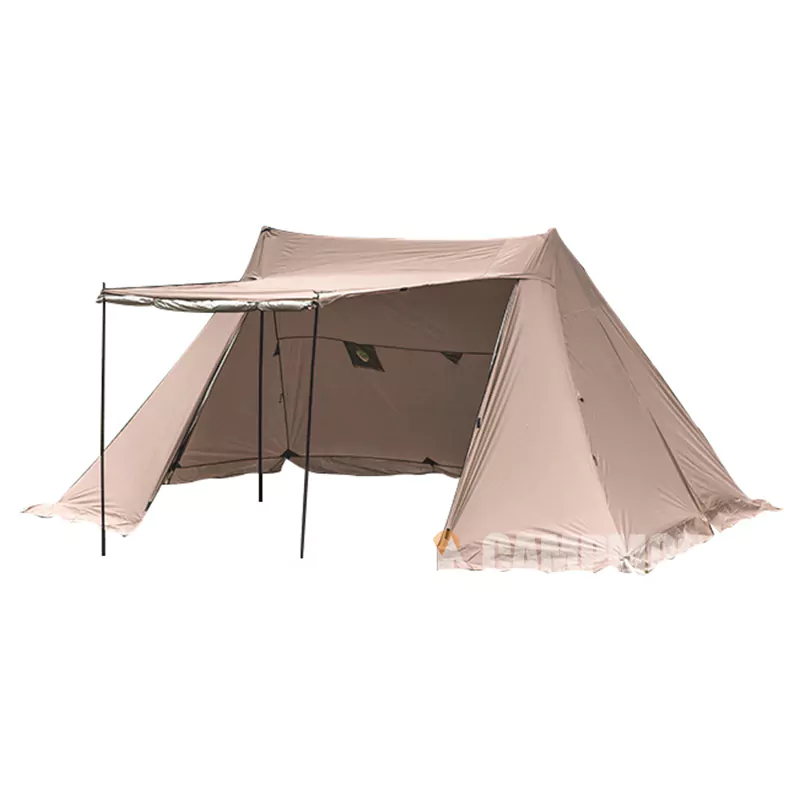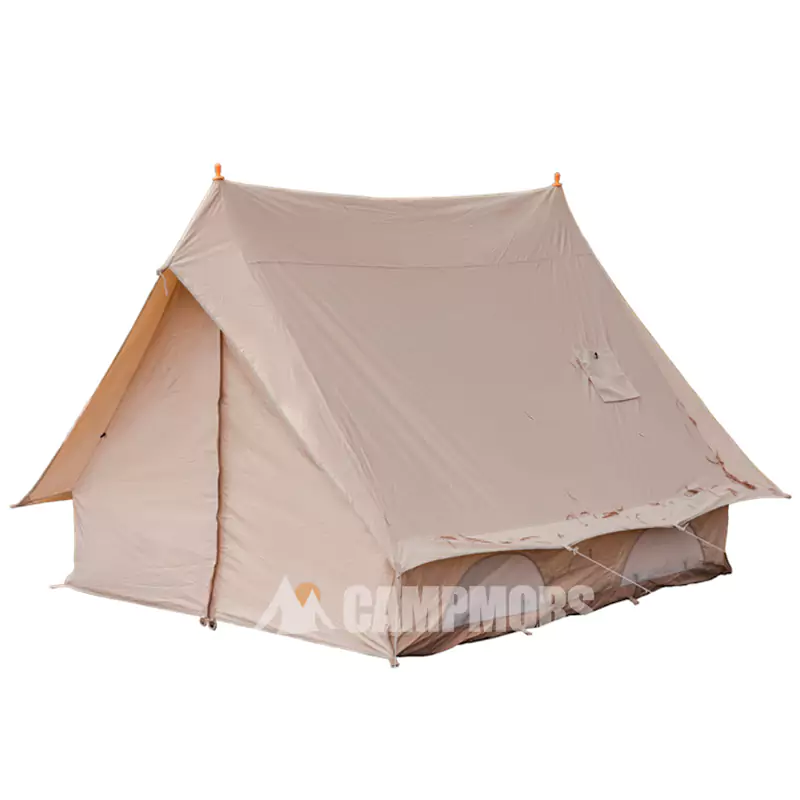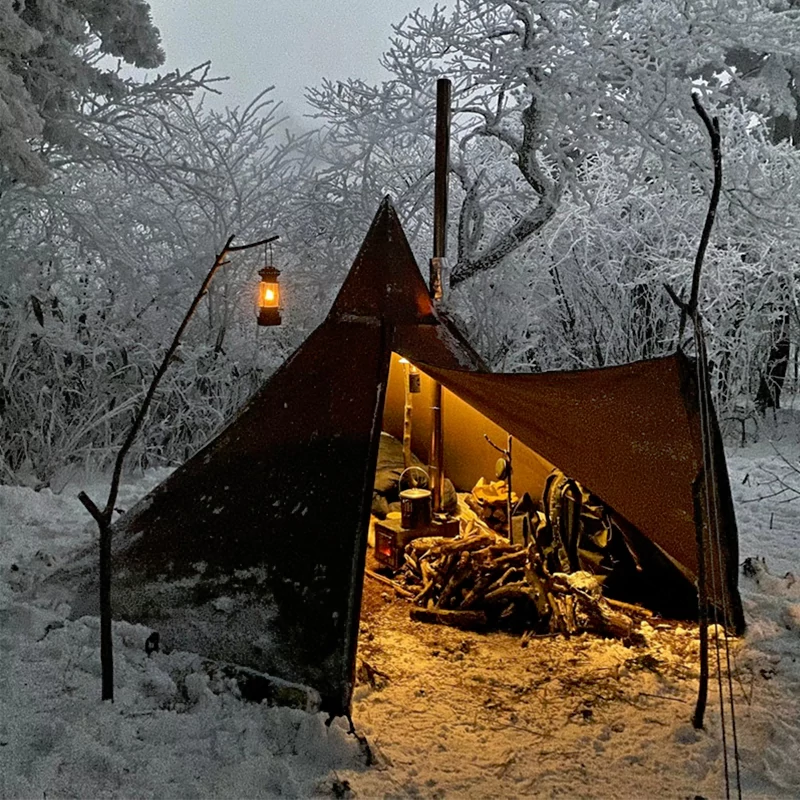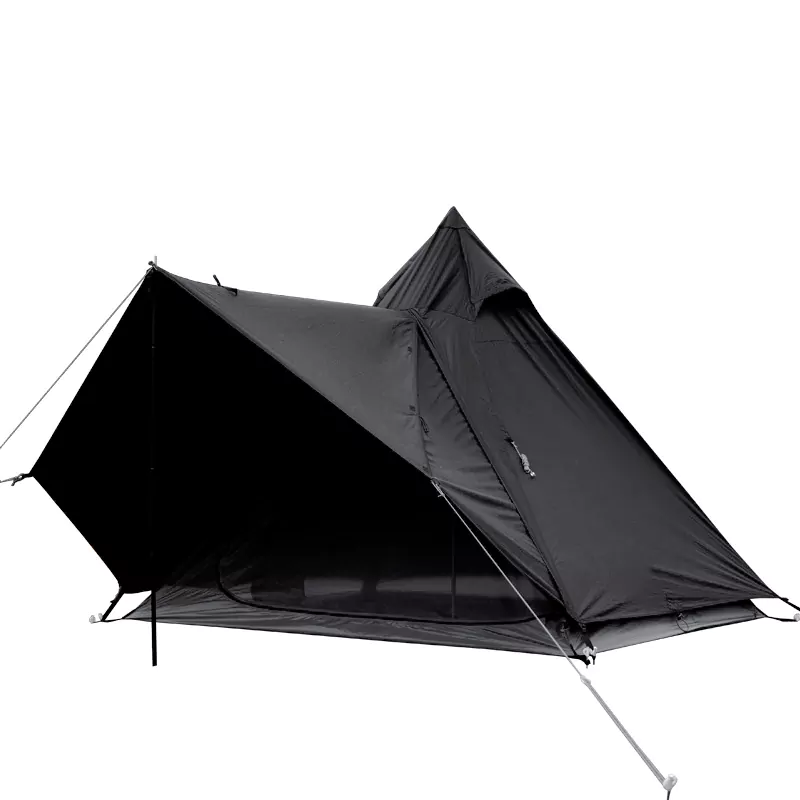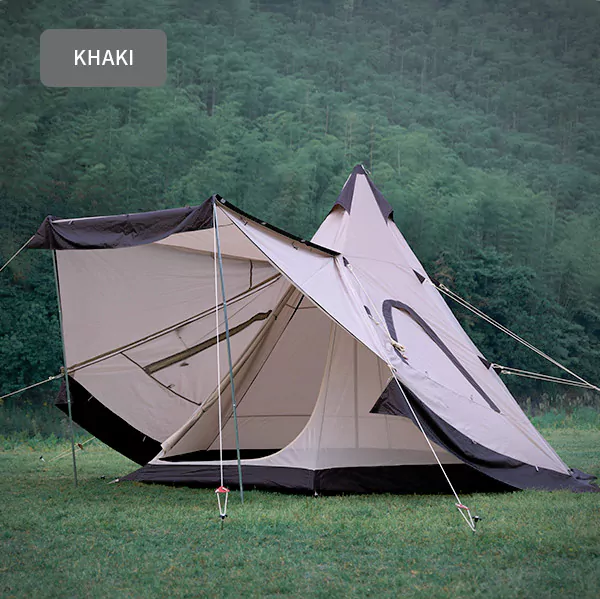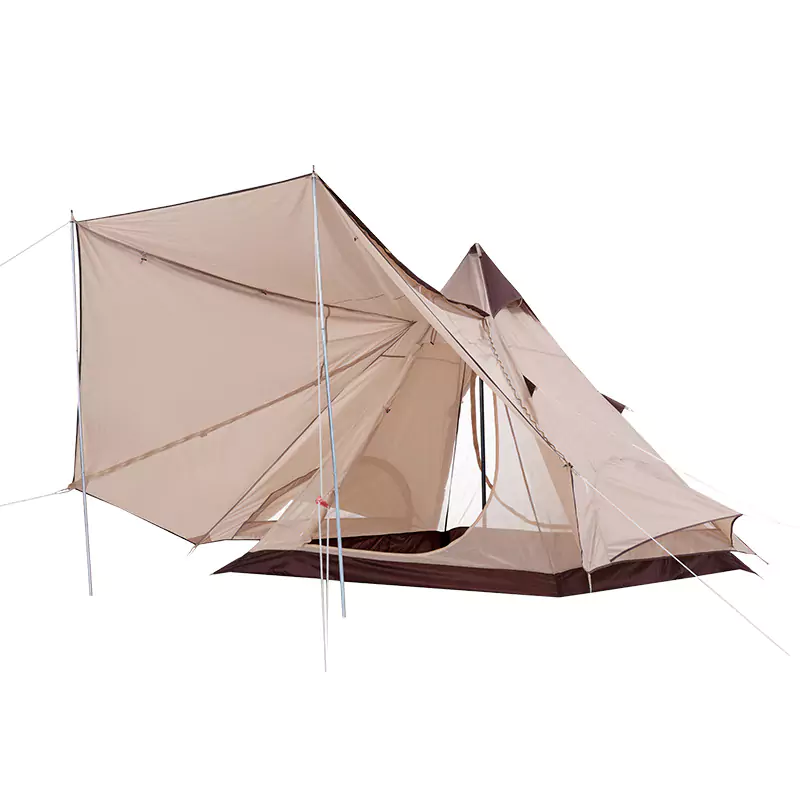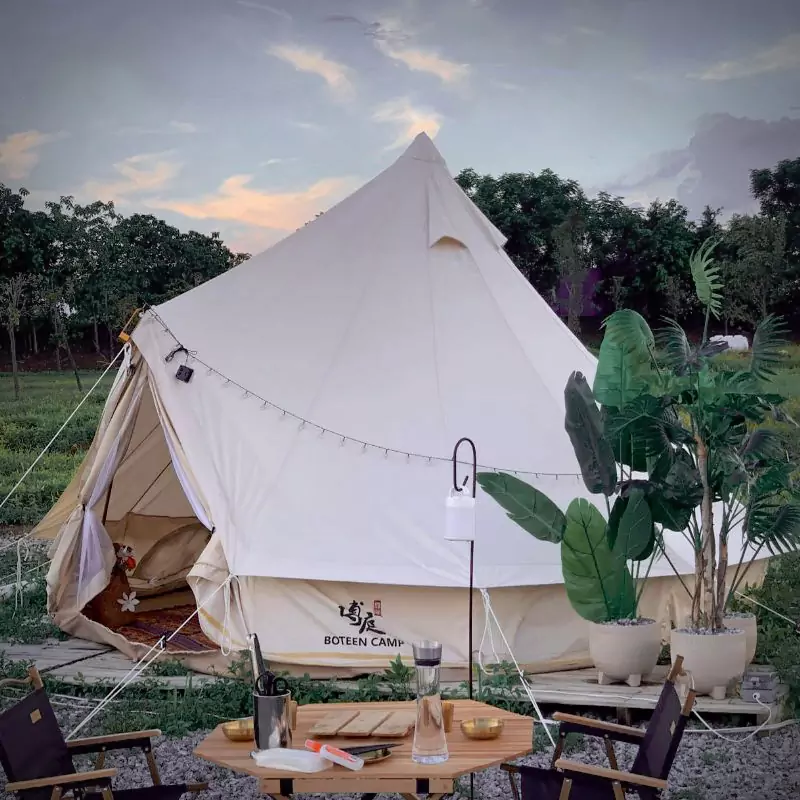Properly packing and storing your peak tent is crucial for maintaining its quality and longevity. Here are some tips to help you pack and store your wedge tent:
Clean and dry the tent: Before packing the conical tent, make sure it’s clean and completely dry. Dirt and moisture can damage the tent fabric and lead to mold growth, so it’s essential to remove any dirt or debris and allow the tent to dry completely. To clean the tent, use a soft-bristled brush or sponge and a mild soap and water solution. Avoid using harsh chemicals or abrasive scrubbers, as these can damage the tent’s waterproof coating. Rinse the tent thoroughly with clean water and hang it up to air dry completely.
Disassemble the spire tent: Take apart the spire tent components and store them separately. Start by removing the tent stakes, guylines, and any other accessories. Then, disassemble the tent poles and store them in their own bag. Finally, detach the tent body from the rainfly and store them separately.
Pack the tent: When packing the spire tent, fold or roll each component tightly to minimize its size. Start by packing the wedge tent body into its stuff sack. If the tent has a footprint or groundsheet, place it inside the stuff sack as well. Next, pack the poles into their own bag or sleeve. Make sure to collapse the poles according to their specific design, as some may have to be broken down into smaller segments. Then, pack the stakes and guylines into their own bag. Finally, pack the rainfly into its own stuff sack.
Store the tent in a dry place: Once you’ve packed the spire tent, store it in a cool, dry place where it won’t be exposed to moisture, direct sunlight, or extreme temperatures. Avoid storing the tent in a damp basement, garage, or attic, as this can lead to mold growth or mildew. Instead, choose a closet or dry storage area where the tent won’t be disturbed. If you’re storing the conical tent for an extended period, consider placing a desiccant packet or moisture absorber in the storage container to prevent excess moisture buildup.
Avoid compressing the tent for long periods: While it’s okay to pack the spire tent tightly for short periods, avoid compressing it for long periods. Compressing the tent can cause creases in the fabric, which can lead to wear and tear over time. If you need to store the spire tent for an extended period, consider hanging it in a closet or storing it in a larger bag that allows for more airflow.
By following these steps, you can properly pack and store your peak tent, which will help preserve its quality and longevity. A well-cared-for tent can last for many years and provide countless camping adventures.
